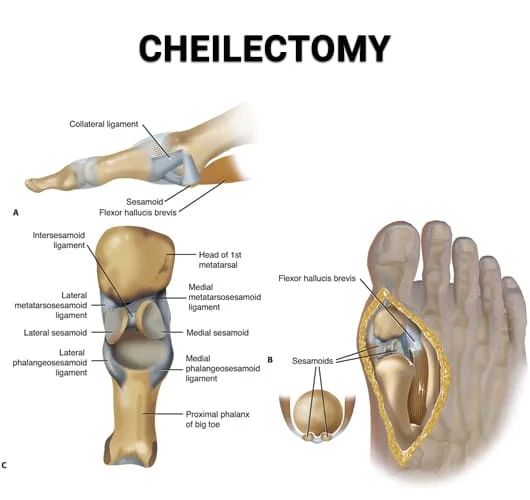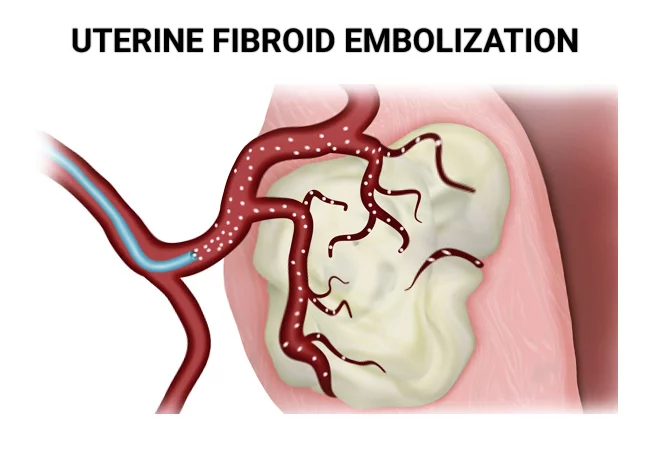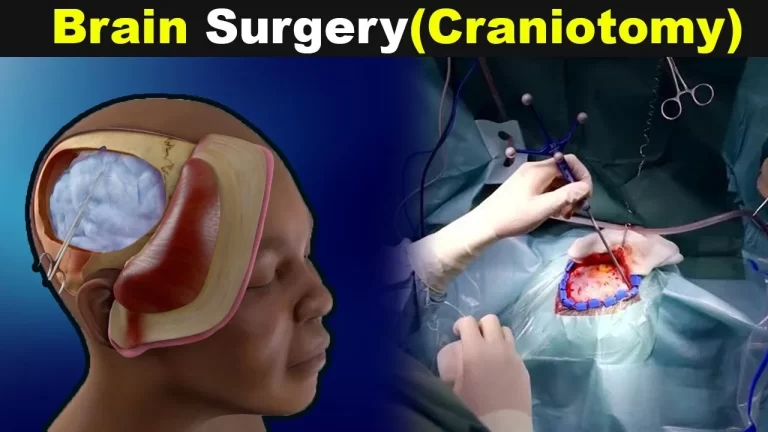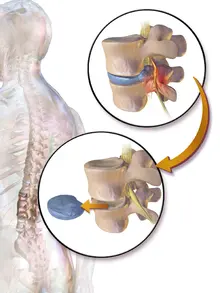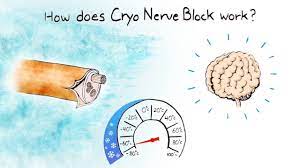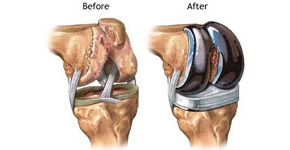Cheilectomy
Table of Contents
What is cheilectomy?
Cheilectomy is a procedure where your physician removes extra bone from the first MTP joint, a joint in your foot. It could be done through a small incision or an even less forward method. It is used for hallux rigidus treatment or arthritis treatment and can elevate movement in your toe.
What conditions does cheilectomy treat?
Hallux Rigidus (also known as Hallux Rigidusis) is a condition that causes the joint at the base of the big toe to stiffen and become rigid, progress in pain, and limited movement. This condition aggravates over time, resulting in increased pain and stiffness up to treatment. Many cases of Hallux Rigidus could be treated non-surgically, but surgery is usually approved if the non-surgical treatments are unsuccessful or if the Hallux Rigidus is severe.
Hallux Rigidus is a joint condition that causes the joint at the base of the big toe (MTP Joint) to stiffen up so it can no longer move. This condition could be very weakening since we use the big toe to walk and stand. Hallux Rigidus improves over time, meaning it is unnoticeable at first and makes worse over time. When the big toe first starts to inflexible, it is called Hallux Limitus. Once the joint is completely stiff or rigid, the name of the condition differs from Hallux Rigidus.
The exact causes of Hallux Rigidus are unknown. Overdo of the big toe joint (MTP joint), injuries, inflammatory diseases like rheumatoid arthritis or gout, and foot structure abnormalities are all concepts to are potential triggers of the condition.
Anatomy
The big toe includes two joints: the metatarsophalangeal (MTP) joint and the interphalangeal joint. The interphalangeal joint is found in the middle of the toe. The MTP joint is the largest of the two, where the first long bone of the foot (metatarsal) meets the first bone of the toe (phalanx).
symptoms
Early symptoms and signs include:
- Pain and stiffness in the big toe.
- Difficulty with positive activities such as running or squatting.
- Swelling and inflammation around the joint.
As the condition becomes more severe, the following symptoms start to show:
- Chronic toe pain.
- Bone spurs (bone overgrowths).
- The hip, knee, or lower back is in dull pain.
- Limping.
Potential Risks
Big toe bone spur surgery is usually safe and uncomplicated. There are, however, risks that should be advised.
Risks of cheilectomy include:
- A foot infection.
- An infection that spreads to other places in the body.
- Delayed or insufficient healing.
- Scarring.
- A post-operative callous.
- Increased foot pain.
These are more likely if your foot is not clean during your recovery or if you have severe chronic disease, like uncontrolled diabetes.
Generally, with a minimally forward procedure, you should expect a smaller scar and faster recovery. However, complications are more common with a minimally forward procedure than with an open one.
Purpose of Cheilectomy
A cheilectomy is done to help with severe pain and/or stiffness in your big toe that’s related to bone spurs.
Bone spurs usually progress on top of the big toe joint and sometimes on the sides. This growth can cause pain and may limit the movement of your big toe, interrupting the process you walking.
These bone spurs can progress due to damage, inflammation, or wear and tear of the joint.
Common predisposing parts related to bone spurs of the big toe and hallux rigidus involve:
- Osteoarthritis is a degenerative condition of the cartilage. The bone beneath the cartilage becomes visible as it erodes over time. Protective bone spurs can form over these defined areas.
- Trauma is similar to stubbing or spraining your toe.
- Repetitively pounding your foot, such as during sports, can result in tiny fractures and inflammation.
- A condition related to turf toe (a sprained toe) can develop. Eventually, this matter can trigger the growth of bone spurs around the injured toe.
Contraindications
This surgery isn’t right for everyone. If your foot condition includes more difficult structural issues beyond bone spurs and joint stiffness, it might not improve with a simple cheilectomy.
If you are at risk for healing problems, you could be prone to problems that would make having the surgery ill-advised. For example:
- Vascular deficiency (inadequate blood flow) in the foot can interfere with healing after surgery and might be a reason to strictly reconsider this procedure.
- Decreased sensation due to peripheral neuropathy can increase your risk of difficulty by reducing your detection of pain—a common sign of post-operative infection.
- Even if none of this relates to you, you could need to delay your surgery if you have an active foot infection or a foot wound.
Summary
Having cheilectomy surgery to remove bone spurs from the big toe can provide you with eternal pain relief and improved mobility. Generally, this is advised a minor surgery with good recovery and a low risk of complications.
If you are prone to foot problems, be sure to see a foot care provider constantly so any new issues can be detected and taken care of at an early stage.
FAQs
Is cheilectomy a major surgery?
Cheilectomy will commonly be done as a day case procedure under a general anesthetic, with a post-operative local anesthetic into the foot distributed to minimize pain. Attending a pre-assessment protection is a good way of maximizing the benefits of your surgery.
How long does a cheilectomy recovery take?
Importance-style activity like walking or running is allowed as soon as the sutures are removed but usually isn’t completely comfortable up to closer to 6-12 weeks post-op. Swelling of the foot is a common detection after surgery and can take anywhere from 6 weeks to 6 months to fully resolve.
What are the disadvantages of cheilectomy?
The disadvantage of the open approach is the amount of soft tissue anatomy needed to expose the joint. This means there will be more swelling, inflammation, and scar tissue formation after the method heals. A larger incision is also more likely to get infected.
Do bone spurs grow back after cheilectomy?
After a cheilectomy has been performed, bone spurs almost never grow back. If the patient accepted the cheilectomy because of arthritis, there will most likely be an improvement in the arthritic pain within one month, and movement in the joint does increase.
Do bone spurs grow back after surgery?
Bone spurs do not frequently grow back after surgery. If they do, there is usually a bone correction issue or other forces that give to its return.
What happens after a cheilectomy?
Stiffness and swelling – After surgery and during the healing phase, the foot will swell. The swelling has not gone down for over six months. Stiffness in the big toe could persist. Progression of arthritis – The success rate of the operation depends on the issue and treatment performed.
How long is the pain after a cheilectomy?
You should have the foot elevated when not walking or exercising for the first week after the operation. Whenever the foot is put down, it swells and becomes sore. It is normal to see mild contusion and some dry blood on the foot. By the end of this week, the post-operative pain will have completely reduced.
Do bone spurs go away naturally?
In most cases, bone spurs do not go away on their keep. Bone spurs may also be asymptomatic and may not essential any treatment. However, if bone spurs produce pain, inflammation, or reduced mobility, treatment may be necessary.
How long surgery after the I can walk?
Try to keep your daily walking to a minimum. You can put weight on your foot two to three days following surgery if it doesn’t hurt. Crutches can be used till the pain subsides. Be sure to place your weight on your heel rather than your toes.
What are the risks of surgery?
Cheilectomy: The biggest danger of this surgery is that it does not relieve all of your pain, and you may need a larger method to address your arthritis in the future. You may also have some numbness after the approach that is usually transient.

